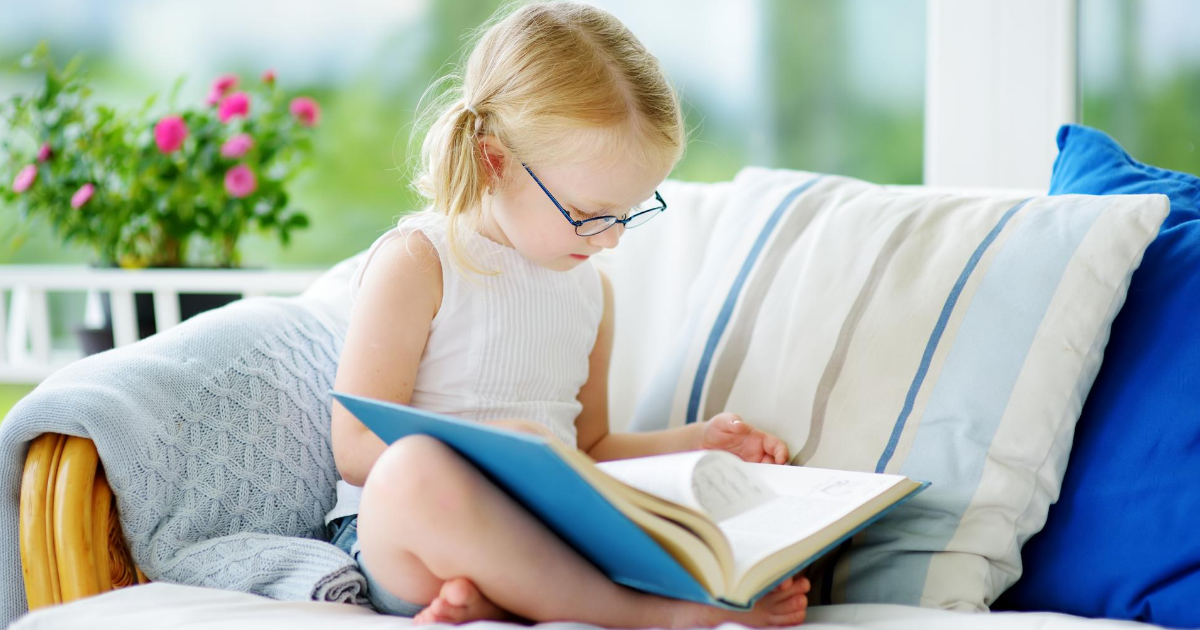How We Are Planning on Homeschooling Our Kids
It took a lot of time and research to make the informed decision to homeschool our kids. It took far more time and research to figure out how. After over a year of researching everything from homeschooling curriculums to alternative schools (like Montessori), we finally feel like we are figuring out what style of homeschooling will work best for us. While we have come a long way, we are still completely open to adjusting our approach. This article is simply my way of sharing our current plan in the hopes of getting some feedback as to how our plan can be refined. Hopefully it will give you some new ideas as well.
Self-Directed Education
When we first started investigating homeschooling (See "Why We are Planning on Homeschooling Our Kids"), we set up meetings with four different homeschooling families in our area, and they graciously shared with us their approach. I distinctly remember the first mom telling me, “however you choose to homeschool, just don’t do unschooling.” At the time, I didn’t know what unschooling even meant, but hearing this woman’s disdain for it piqued my interest.
After some quick research, I came to discover that unschooling is a homeschooling approach based on self-directed learning in which you allow the child to guide their own learning. To gain a better understanding of this approach, I read the book Free to Learn by Dr. Peter Gray, which left me convinced that self-directed learning is an effective approach that will work well for us.
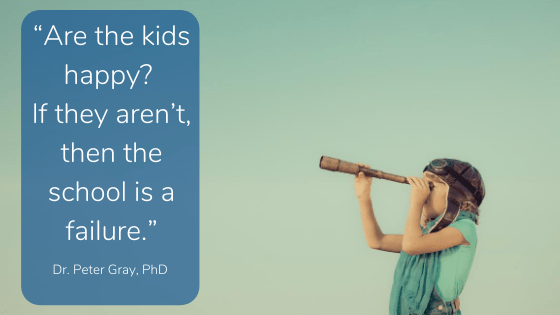
The basic premise of self-directed learning is that humans are born with a natural drive to learn. We crave it just as we crave food. I recently enjoyed reading the New York Time’s bestselling memoir Educated, and it was fascinating to see that in a home where an abusive father discouraged academics, her brother was so determined to learn that he hid in the basement reading the encyclopedia. Three of the six children educated themselves to the point of receiving PhDs from prestigious universities. Our drive to educate ourselves is powerful.
During my research into self-directed learning, I studied a similar educational philosophy known as the Montessori approach, which was pioneered by Maria Montessori in the early 1900s. She suggested that if children are placed in the proper learning environment, they will educate themselves: “The teacher’s task is not to talk, but to prepare and arrange a series of motives for cultural activity in a special environment made for the child.”1
Our drive to educate ourselves is powerful.
Creating the Right Environment
This idea of creating the proper learning environment for effective self-directed learning really captured my interest. We visited a local Montessori school, and the carefully crafted environment was well suited to self-directed learning. However, it seemed to me that it was somewhat outdated. They had the children washing dishes using wash clothes and hanging laundry up to dry. It seemed like the classroom was designed more than a century ago.
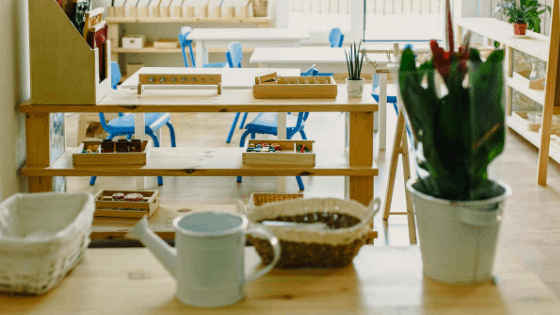
A Montessori classroom reminds me of the early 1900s...
We also spent several months volunteering in a Sudbury School (a democratic school for self-directed learning). At a Sudbury School, each student has an equal vote in determining how the school is run, and the guiding principle is for each student to have the freedom to pursue their own interests for the entire school day. I personally found that there were two obstacles to self-directed learning in the Sudbury school environment:
- The Peer Culture. From what I observed at the Sudbury school, students spend most of their day with each other. Most students seemed more concerned about being with and accepted by each other rather than focusing on their own self-selected educational pursuits.
- An Underdeveloped Learning Environment. The learning environment was composed of books and materials donated by parents or found at thrift shops. While computers were made available (a step up from Montesorri’s complete lack of technology), the environment just sort of seemed like it was thrown together. And most concerning to me was the fact that the learning environment was under the power of the student body (See "Why Unschooling is Better for My Family Than Sudbury Schooling").
My study of both Montessori and Sudbury schools led me to conclude that a proper learning environment should do two things:
1. Be Supported by a Positive Family Culture
According to Abraham Maslow, before seeking fulfillment of our higher-level needs such as self-education (an aspect of self-actualization), we first seek to meet our lower-level needs such as obtaining food and water, safety, love, and esteem/recognition:
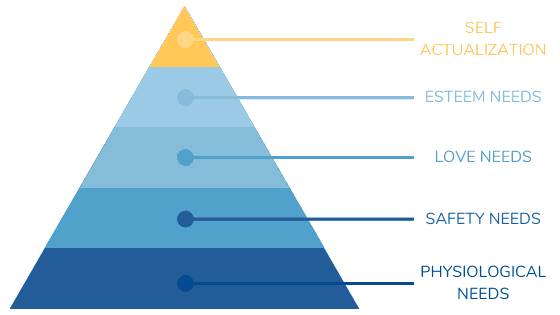
For this reason, I think it is of extreme importance to create a learning environment in which a child’s basic needs are regularly being met. I believe that a home with a positive family culture can provide such an environment (See "How to Build a Strong Family Culture: A Step-by-Step Guide"). Parents are wired to take care of their children and protect them from harm. Parents do their best to provide their children with unconditional love, and they are much more willing to give their children the attention they need.
I believe that parents are in the best position to provide their children with an environment that will consistently meet basic needs. And when a child’s basic needs are met, their internal resources are freed up to focus on the self-actualizing activity of self-directed learning (See "30+ Human Needs: A Comprehensive List").
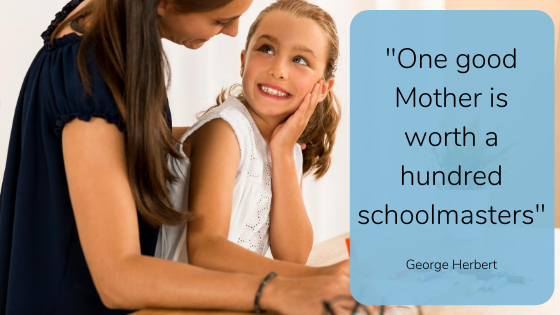
2. Prepare Children for their Future Life
Not every piece of knowledge is created equal. It would take 57,000 years to read everything on the internet.2 This should make it clear that our children don’t have time to learn everything under the sun. Some knowledge may be useful to a historian (who wrote the magna carta and what year it was signed), some knowledge may be useful to a physician (how to perform open-heart surgery), and some knowledge is useful to all of us (how to make and follow a budget).
The curriculum currently used by schools represents one organization’s view regarding what will best prepare our children for their future. I think we can all agree that most of us only use a small fraction of what we learned in school. So, we must ask ourselves, “What do my kids really need to know to be successful 15 years from now?” Here’s are four things I think our kids will need to know:
1. How to Meet Their Needs in Healthy Ways
38% of adults battle illicit drug use disorders.3 42.4% of Americans are obese.4 And nearly 46.1% of adults have cheated on their partner while in a committed relationship.5 To me, these statistics are a clear signal that the average American does not know how to get their needs met in healthy ways.
There are obviously many contributing causes to this issue, but I think one big one is not developing trust in one’s own feelings and needs. As children we are forced to “do as we’re told.” In a classroom of 30 other students, there isn’t time or space for a child to listen to their own feelings and needs and honor them. The safety and education of the group is more important than the inner experience of an individual (See "The #1 Roadblock to Being Your Authentic Self").
To me, one of the biggest benefits of homeschooling is the opportunity to raise my kids in an environment where their needs and feelings are listened to, honored, and met in healthy ways. Reading the book Nonviolent Communication by Marshall Rosenberg was huge in helping me learn how to create such an environment (See "How Nonviolent Communication Completely Transformed My Relationships").

2. How to Have Deep, Meaningful Relationships with Others
In the United States, 40-50 percent of marriages end in divorce.6 Many parents worry about their kids learning how to make friends with their peers. But, I think it is important to realize how short-lived most peer relationships are. Suzie might be your best friend one minute and then your worst enemy the next. Peer relationships are transient and conditional, not the best model for romantic relationships.
If we are going to stem the rise of divorce, I think it is far more important for children to learn how to operate within unconditional love relationships. The parent-child relationship is one of unconditional love: you will love your child no matter what (See "How to Develop Unconditional Love: A Scientific Approach"). If done right, the parent-child relationship can help sow the seeds for a healthy spouse-spouse relationship down the road.7
I’m excited about homeschooling because it will allow our family to prioritize family relationships over peer relationships. We will certainly make a careful effort to ensure our children have opportunities to make friends and be a part of communities outside our family circle, but we want family to be #1 to our kids. The book Hold Onto Your Kids by Gordon Neufield & Dr. Gabor Maté helped inform my perspective in this regard.
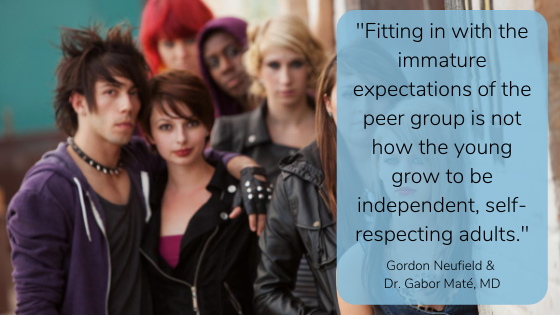
3. How to do the Whole #Adulting Thing
The average American credit card holder owes $8,398 in credit card debt.8 Add that to school and auto loans, and the average American adult is drowning in debt. This is hugely detrimental to one’s quality of life, something that no amount of book smarts can undo. I see practical life skills (such as learning how to make and follow a budget, avoid debt, and save money) as being one of the most important things for children to learn. For this reason, practical life skills are at the core of our custom-built homeschooling curriculum.
Our curriculum is broken down into hundreds of badges that our kids can earn whenever they’d like. Each badge represents a related set of skills and/or knowledge for our kids to demonstrate in order to earn them:
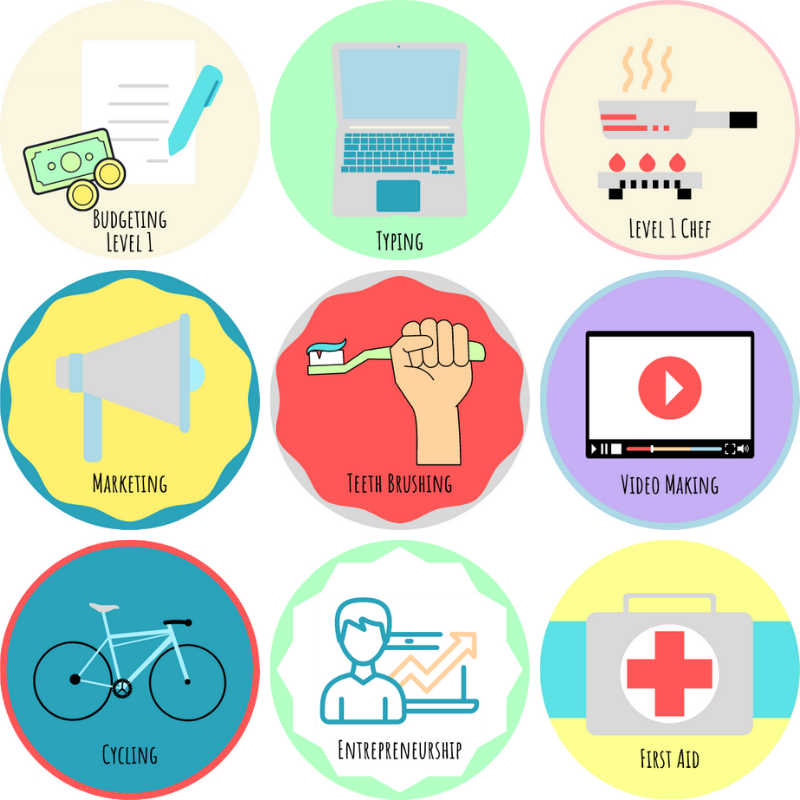
For instance, in order to earn the teeth brushing badge, Joseph had to successfully brush his teeth every morning and night for a week. He also had to be able to answer questions related to brushing his teeth such as “why is it important to brush your teeth?”
Instead of directly teaching our curriculum, we try to create an environment that will do the teaching for us. We do this by collecting a variety of resources related to that badge and then putting these resources where our kids will naturally encounter them.
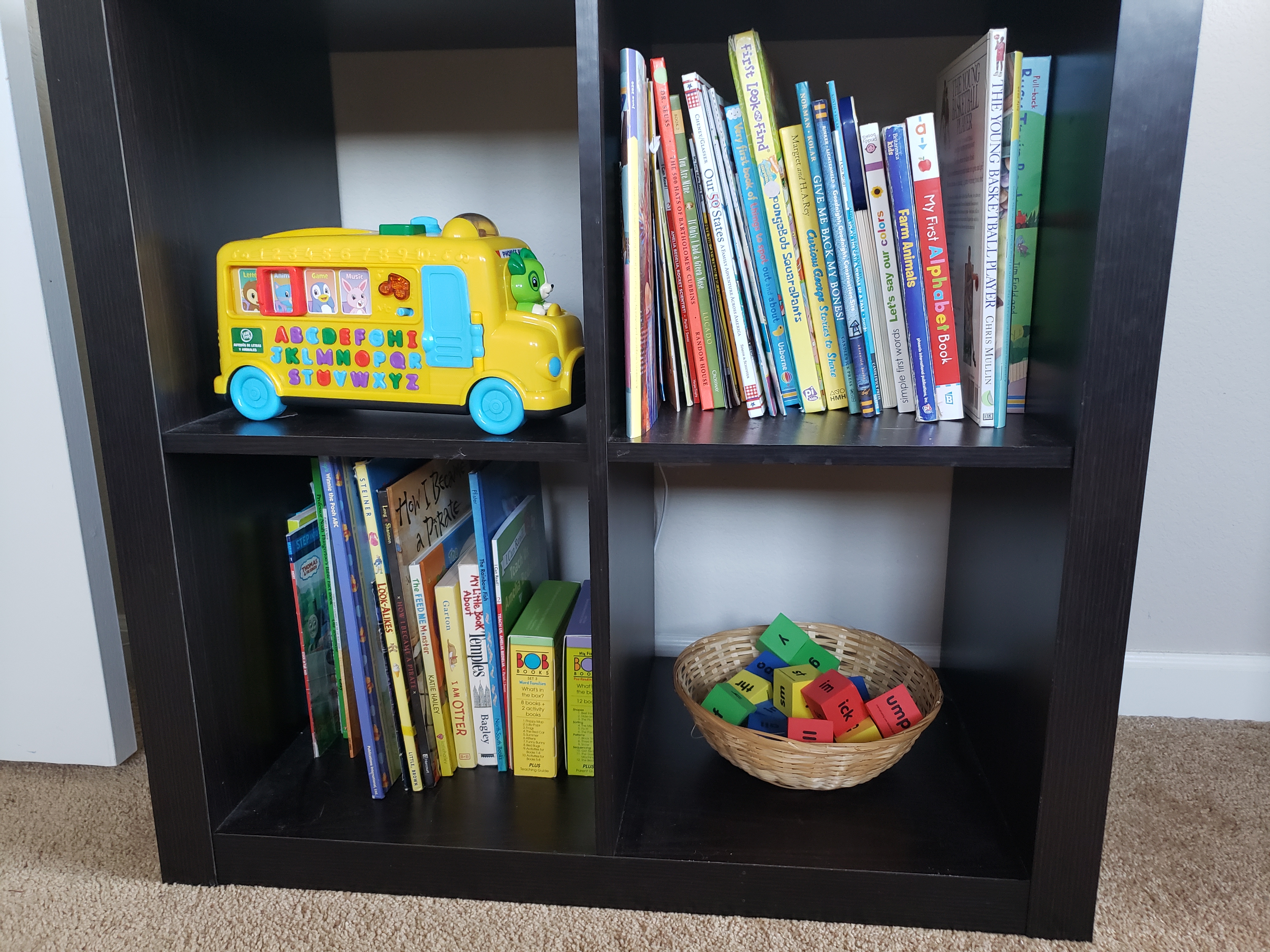
Joseph is currently working on the reading badge, so we put toys and books related to reading where he can easily access them.
For instance, with the teeth brushing badge, I created a YouTube playlist filled with videos related to the why and how of brushing one’s teeth. Joseph often requested to watch this playlist during his 30-60 minutes of screen time each day. I also bought several picture books on the topic of teeth brushing, which he would ask me to read to him before naps and bedtimes. Lastly, we bought a talking toothbrush that would tell him which quadrants of his mouth to brush when. He learned everything he needed to with very little direct instruction.
Once earned, some badges come with privileges and/or responsibilities. For instance, with the tooth brushing badge, Joseph received the privilege of having a brand new electric toothbrush, something he was very excited about. It was also a privilege for him to be able to brush his teeth by himself (independence is a huge privilege in and of itself). The tooth brushing badge also comes with the responsibility of taking good care of his teeth or else he’ll need to pay for part of the cost of getting a cavity filled in (we pay a good allowance so he’ll learn how to handle money and have enough to pay for things like this).

If you ever come to our home for a visit, Joseph will inevitably drag you up to his room to proudly show off his collection of badges.
For a full description of our Family Badges System, be sure to check out my article "How We Teach Our Kids Life Skills Using 150+ Badges." It will walk you through our system, and provide detailed instructions for implementing a similiar system with your own kids. It can work as your sole homeschooling curriculum or as a life-skills supplement.
4. How to Learn Anything
Most K-12 schools are focused on preparing kids for college, but our goal is bigger than that. By the time our kids reach the age of 18, I’d like them to be prepared to pursue any path their heart desires. Whether that is entrepreneurship, a trade school, college, or anything else they might dream up. Considering the fact that our current world is changing at a dramatic pace, I’d like my kids to be prepared for a wide range of possibilities.
Learning to learn is one of the most important skills needed to survive in our constantly changing world. I believe that our focus on self-directed education and life skills are key elements in helping our kids develop this skill. We also have a memorization badge, which will require them to demonstrate key memorization skills in order to earn it (See "How to Perfectly Memorize Anything with High Quality Flashcards").
Learning to learn is one of the most important skills needed to survive in our constantly changing world.
When it comes to memorizing information, any person with a good memory will tell you that the more you already know, the easier it is to memorize something new. This is because new information sticks best when you have something in your knowledge bank to stick it to. For instance, if I already know that Mexicans eat a lot of corn, it will be very easy for me to memorize the fact that ancient American civilizations relied on corn as their primary source of food.
To help our kids develop a decent knowledge bank, we are planning on incorporating many academic badges. We also want to ensure that our home environment is full of books. Not only do books help children learn more information, but they also help children become better readers, a skill that is hugely important to any future job or educational path. In my work with pre-med students, I've noticed that having poor reading skills is the number one thing that holds students back from succeeding on the medical school entrance exam.
Next Steps
We are constantly re-evaluating and revamping our homeschooling curriculum. And I hope that we will continue doing so until our kids are all grown up. The world we are preparing our kids for is constantly changing, and their education should change with it. One thing I love about homeschooling is that we have the flexibility to change with the times while many public schools are stuck in the past (#bureaucraticlife).
I hope you found something in this article to help you. Or, if you have an idea as to how our homeschooling curriculum might be improved, I’d love to hear it. I’m always looking for new ideas and ways to improve our current approach.
Hi fellow human! Thanks for visiting my personal blog. I’m an intentional family man who is currently passionate about parenting, family culture, homeschooling, and self improvement. This blog isn’t a business. It’s just my way of connecting with people with just as much passion for these topics as me. So, if you enjoy my musings, be sure to reach out.
- The Absorbent Mind by Maria Montessori
- "How Long Would it Take to Read the Whole Internet" by The Next Web
- ”Alcohol and Drug Abuse Statistics” by American Addiction Centers
- ”Prevalence of Obesity and Severe Obesity Among Adults: United States, 2017–2018” by CDC
- ”Admitting to Cheating” by Health Testing Centers
- ”Marriage and Divorce” by American Psychological Association
- ”How the Attachment Bond Shapes Adult Relationships” by HelpGuide.org
- ”Key Figures Behind America’s Consumer Debt” by Debt.org

